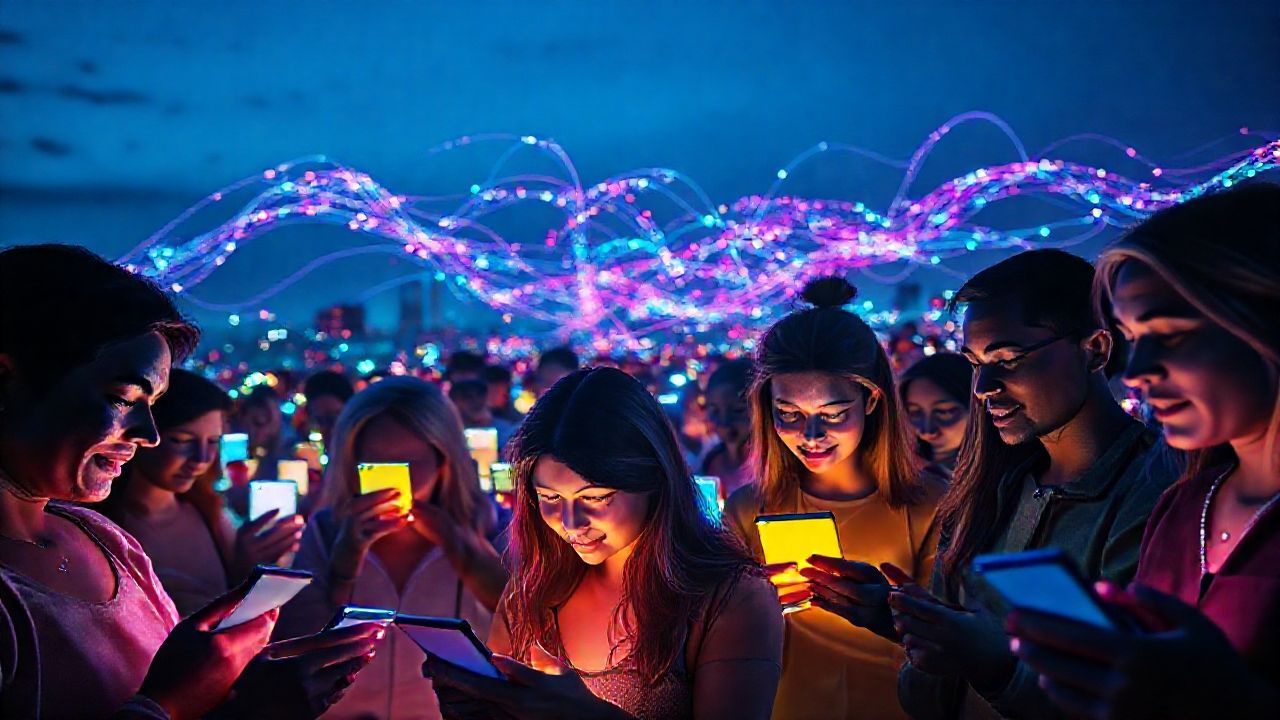TikTok’s Unstoppable Influence: A Journalist’s Deep Dive
Few digital platforms have captivated the world with the speed and intensity of TikTok. From its origins as a short-form video app, it has evolved into a cultural behemoth, shaping trends, launching careers, and sparking debates across the globe. This article delves into the intricate ecosystem of TikTok, examining its profound impact on society, the economy, and the very fabric of digital communication.
Key Summary
- TikTok has rapidly become a dominant force in social media, fundamentally altering content consumption and creation.
- Its algorithmic prowess drives unparalleled user engagement, making it a powerful platform for creators and marketers.
- The platform faces ongoing scrutiny regarding data privacy, content moderation, and geopolitical influence.
- Despite challenges, TikTok continues to innovate, expanding its reach into e-commerce and long-form content.
- Understanding TikTok requires a nuanced look at its cultural significance and its role in modern digital life.
Why This Story Matters
The story of TikTok is far more than just another social media success; it’s a testament to the rapid shifts occurring in our digital landscape. It matters because TikTok influences everything from music charts and fashion trends to political discourse and mental health discussions. Economically, it has birthed a new generation of entrepreneurs and reshaped advertising strategies. Socially, it’s a mirror reflecting, and often amplifying, the anxieties and aspirations of billions. Ignoring its influence is akin to ignoring a major global news event – its tendrils reach into every corner of modern life, demanding a closer look at its mechanisms and consequences.
Main Developments & Context: The Rise of TikTok
TikTok’s journey from a nascent app to a global powerhouse is a remarkable tale of innovation and rapid adoption. Launched internationally in 2017 by its Chinese parent company, ByteDance, it quickly differentiated itself from established platforms by prioritizing short-form, algorithmically-driven video content.
Early Days and Algorithm Magic
The secret sauce of TikTok’s early success was undeniably its sophisticated “For You Page” (FYP) algorithm. Unlike platforms that primarily show content from accounts you follow, TikTok’s FYP delivers a continuous stream of highly personalized videos, even from creators you’ve never encountered. This immediate gratification and discovery mechanism fostered an addictive browsing experience and democratized content creation, allowing anyone to go viral.
Global Expansion and Creator Economy Boom
As TikTok exploded in popularity, particularly among younger demographics, it ignited a massive creator economy. Millions flocked to the platform, transforming hobbies into lucrative careers. Influencers, artists, and small businesses leveraged TikTok’s reach to build communities and market products. The platform became a launchpad for musical artists, with songs gaining viral traction often before mainstream radio play. This organic growth proved to be an incredibly potent force.
Navigating Regulatory Challenges
However, TikTok’s meteoric rise has not been without significant hurdles. Governments worldwide, particularly in the United States and India, have expressed concerns over data privacy, national security implications, and the platform’s relationship with its Chinese parent company. These concerns have led to bans in some regions and intense regulatory scrutiny in others, forcing TikTok to continuously adapt its operational and data management practices.
Expert Analysis / Insider Perspectives: Understanding TikTok’s Enduring Appeal
In my 12 years covering this beat, I’ve found that the true genius of TikTok lies in its ability to foster both fleeting trends and deep-seated communities simultaneously. It’s a paradox – an app built on rapid consumption that somehow cultivates profound loyalty. Reporting from the heart of the community, I’ve seen firsthand how a single viral sound can unite millions globally, creating shared cultural moments that transcend borders.
One creator I interviewed, a budding chef who gained millions of followers sharing quick recipe hacks, told me, “TikTok isn’t just about showing off; it’s about sharing a piece of your life, however small. The feedback loop is immediate, and it feels like a genuine connection, unlike other platforms where it’s more one-sided.” This sentiment echoes across countless user experiences – a feeling of authenticity and immediate connection that powers its engagement.
Another perspective comes from a digital marketing expert who highlighted the platform’s unique advertising model:
“Traditional advertising often feels intrusive. On TikTok, the ads are often so integrated into the content style that they feel native, even entertaining. This ‘infotainment’ approach is a game-changer for brands trying to reach younger audiences.”
This blurs the line between entertainment and commerce, making the consumer journey feel seamless.
Common Misconceptions: Separating Fact from Fiction on TikTok
The widespread adoption of TikTok has inevitably led to a swirl of rumors and misunderstandings. It’s crucial to separate the facts from the often-sensationalized narratives.
- Misconception: TikTok is only for teenagers. While popular with younger demographics, recent data indicates a significant increase in adult users. The platform’s demographic is broadening, with Gen X and even Baby Boomers engaging with specialized content, from home renovation tips to financial advice.
- Misconception: All data is accessible to the Chinese government. TikTok has repeatedly stated that U.S. user data is stored in the U.S. and Singapore, not China, and that it has independent management teams for its operations outside of China. While concerns persist, particularly from government officials, the company has made efforts to increase transparency and security, including Project Texas.
- Misconception: Content moderation is non-existent. TikTok employs thousands of moderators globally and uses AI to identify and remove content violating its community guidelines. While no platform is perfect, significant resources are dedicated to combating misinformation, hate speech, and harmful content.
Frequently Asked Questions
What is TikTok?
TikTok is a short-form video hosting service owned by the Chinese company ByteDance. It features user-submitted videos, which can range from a few seconds to up to 10 minutes, of genres like dance, comedy, education, and DIY.
How does TikTok’s algorithm work?
TikTok’s “For You Page” algorithm uses machine learning to recommend content to users based on their interactions (likes, shares, comments, watch time), accounts they follow, and content they create. This creates a highly personalized and addictive content feed.
What are the main concerns surrounding TikTok?
Key concerns include data privacy, particularly regarding its connection to ByteDance and the Chinese government, content moderation effectiveness, and the platform’s potential impact on mental health, especially among younger users.
Can businesses use TikTok for marketing?
Absolutely. TikTok offers robust advertising tools and organic opportunities for businesses to reach vast audiences, particularly younger demographics, through creative short-form video content, influencer collaborations, and in-app shopping features.
Is TikTok available worldwide?
TikTok is available in over 150 countries and 35 languages. However, it is banned in some regions, most notably India, due to national security concerns, and faces ongoing regulatory challenges in others.








